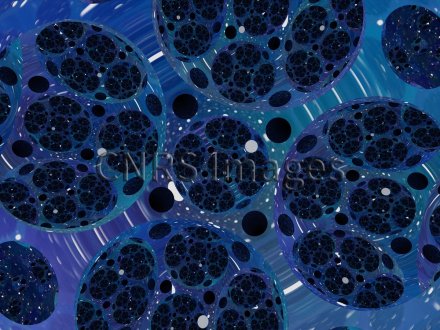Production year
2022

© R. COULON/S. MATSUMOTO/H. SEGERMAN/S. TRETTEL/IRMAR/GeorgiaTech/OSU/Stanford University/CNRS Images.Licence CC BY-NC-SA 4.0
20220122_0015
Hyperbolic geometry, introduced in the nineteenth century, is a mathematical field that has profoundly transformed the way geometry has been taught since antiquity. In this space with unusual properties, light does not travel in a straight line but along geodesics, the shortest curves between two points, thus altering our visual perception of the world. Scientists have developed an application that simulates in real time what the “inhabitants” of such a universe would see. The image features a three-dimensional, finite volume, hyperbolic manifold, lit by a luminous globe. The ultimate goal of this project is to decipher the properties of such spaces. And to open a window onto an imaginary world sketching out the outlines of a science that can sometimes seem abstract. This image was awarded the Grand Jury Prize in the 2022 La preuve par l’image (LPPI) photography competition.
The use of media visible on the CNRS Images Platform can be granted on request. Any reproduction or representation is forbidden without prior authorization from CNRS Images (except for resources under Creative Commons license).
No modification of an image may be made without the prior consent of CNRS Images.
No use of an image for advertising purposes or distribution to a third party may be made without the prior agreement of CNRS Images.
For more information, please consult our general conditions
2022
Our work is guided by the way scientists question the world around them and we translate their research into images to help people to understand the world better and to awaken their curiosity and wonderment.